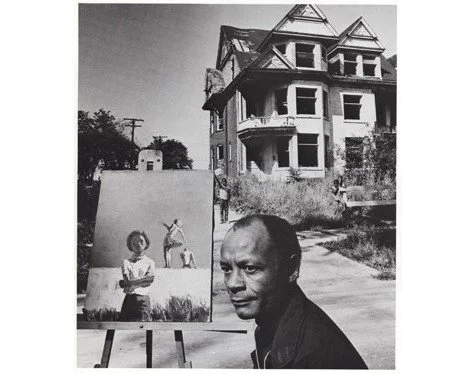HUGHIE LEE-SMITH
Hughie Lee-Smith (1915-1999) was a well-known painter whose paintings capture the social disengagement that Americans felt in the middle of the 20th century. His paintings have an otherworldly feel to them, with barren landscapes interspersed with flashes of brilliant color. Lee-Smith was deeply influenced by the vast settings with contemplative characters facing away from the observer that came from the Midwest. His paintings combine elements of French Neoclassical artists like Jean-Auguste-Dominique Ingres with Surrealist influences. He created a unique body of work that reflected his persistent quest to transcend reality and was distinguished by a dreamy, symbolic logic. Lee-Smith was born in Eustis, Florida and was raised during the Great Depression. He spent his formative years in Chicago, Cleveland, and Detroit. He received his education at the Detroit Society of Arts and Crafts and the Cleveland School of Art, and he was actively involved with Karamu House, the nation's oldest continuously operating Black theater. His teaching career eventually brought him to the East Coast, where he taught at the Art Students League in New York City and later served as the acting head of the art department at Howard University in Washington, DC, a center of the Black Arts Movement.
Lee-Smith’s artwork has been featured in retrospectives at the Studio Museum in Harlem, New York (1988), the New Jersey State Museum in Trenton (1988), and the Ogunquit Museum of American Art in Maine (1997). His pieces are part of collections at the Metropolitan Museum of Art in New York, the Smithsonian Museum in Washington, DC, the San Francisco Museum of Modern Art, the Art Institute of Chicago, the Detroit Institute of Art, the Studio Museum in Harlem, the San Diego Museum of Art, Howard University in Washington, DC, and the Schomburg Center for Research in Black Culture in New York, among others.

